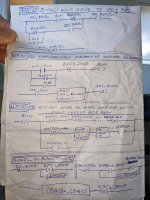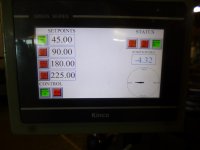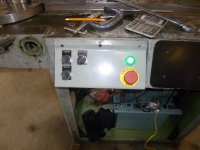jets
Member
I have a bender table that I am automating. I have added a Kinco HMI and PLC, I am also using an Omron encoder sensing the rotation of the table in degrees.
There is a double acting hydraulic cylinder controlling the table. I have everything working good controlling the position of the table (scaled in degrees).
My problem is I want to set up to eight bend angles. So, I have eight set-points and eight enable bits to turn on between one and eight bends. I have copied bend angle the logic into eight subroutines each with there own set-point and enable bits.
But for the life of me I can’t figure (I should say remember, I did this years ago) out how to increment or move to the next subroutine once the first one is done. Then when the second on is done move to the third and so on… Once I hit the eight bend, I want to return to the first.
In actuality we will probably only ever use a maximum of four bend angle so this may be reduced from eight positions to four.
When the table moves to position one, say 90 degrees it then moves back to zero degrees. Each of these positions has it own bit.
How can I increment through the eight bends?
There is a double acting hydraulic cylinder controlling the table. I have everything working good controlling the position of the table (scaled in degrees).
My problem is I want to set up to eight bend angles. So, I have eight set-points and eight enable bits to turn on between one and eight bends. I have copied bend angle the logic into eight subroutines each with there own set-point and enable bits.
But for the life of me I can’t figure (I should say remember, I did this years ago) out how to increment or move to the next subroutine once the first one is done. Then when the second on is done move to the third and so on… Once I hit the eight bend, I want to return to the first.
In actuality we will probably only ever use a maximum of four bend angle so this may be reduced from eight positions to four.
When the table moves to position one, say 90 degrees it then moves back to zero degrees. Each of these positions has it own bit.
How can I increment through the eight bends?







